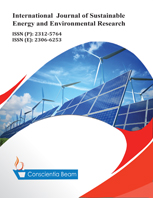Evaluation of extreme flow characteristics in the Casamance watershed upstream of Kolda using the IHA/RVA method
DOI:
https://doi.org/10.18488/13.v12i2.3584Abstract
Understanding water availability is essential for the development and management of water resources, as well as for designing interventions for river health. Climate change/variability impacts the hydrology of a river system, which subsequently affects human and ecological health by altering the structure and function of the aquatic ecosystem. This study therefore aims to assess water availability and river health according to current and future climate scenarios in the Casamance watershed upstream of Kolda. Climate change is expected to increase hydrologic alterations from low (currently) to high (in the future), as revealed by the Indicators of Hydrologic Alteration (IHA) tool. Average annual water availability decreased, varying seasonally, and seasonal trends followed annual trends under Shared Socioeconomic Pathways (SSP) scenarios. In the basin, negative developments in minimum and maximum annual conditions are generally decreasing over the future period, compared to the reference period (1985-2014), with the exception of the minimum flow rate over 7 and 30 days on SSP 126 and the minimum flow rate over 30 days and the maximum flow rate 1, 3 and 7 days on SSP 585. In this SSP 585 scenario, the Mann Kendall test on the minimum flow rate and the flow rate maximum indicate the most significant downward trend with a risk of error of 0.05, with a Kendall tau varying from -0.45 m3/s/year to - 0.05 m3/s/year. For the minimum flow parameters, Kolda station shows negative Hydrological Alteration (HA) values for the high RVA category, which results in a decrease in low flow.

